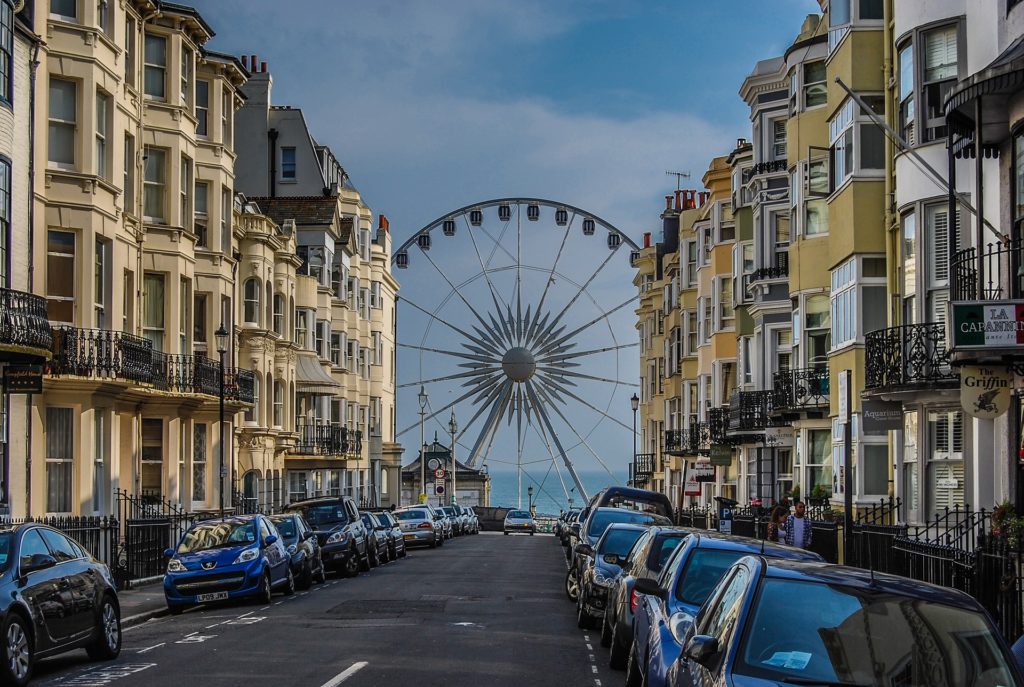The story behind Brighton’s iconic buildings
Table of Contents
Brighton is a quintessential treasure of England. It embodies all the important English traits, such as our love for a sharp sea breeze and a stiff upper lip. Not sure about the latter? Well, did you know that the original Brighton town was burned down in 1514 by the French. The inhabitants responded by quickly rebuilding their little town right there. When the French came back to burn the remade Brighton in 1545, the people fought back and drove the French away.
Then, in 1703, Brighton was battered by a storm, before the town was hit by another storm in 1705 that ruined houses. All the while, the sea was eroding the shore of Brighton town.
Despite all this, not only did Brighton survive, it flourished and even gained the interest of royalty! Naturally, the buildings in Brighton have some stories to tell about the town’s exciting history, and some have served different purposes along the way as Brighton battled through its hardships.
The Old Ship
The story of this Brighton hotel is peppered with history, royalty, and musicians. The site has been used as a hotel since Tudor times, with the first recorded accommodation here named the ‘Shippe Inn’. It became the ‘Old Ship Inn’ in 1650, after another hotel opened across the street called the ‘New Ship Inn’.
The Old Ship Inn was gradually extended as its owners bought the homes next to it, but it wasn’t as close to the shoreline as it is today. A storm in 1703 destroyed 13 buildings at the end of the street and brought the sea much closer to the Old Ship. With sea views and a visit from the fashionable Prince of Wales, Prince George (who would later become King George IV), the Old Ship built a great reputation. So much so that its ballroom later came to host the famous violinist, Niccolò Paganini — the ballroom has even been renamed in his honour.
But not everything that the current Old Ship hotel offers was built for the purpose of hospitality. Underneath the building is a series of tunnels from the beach, under the hotel, all the way into town and further. These tunnels were originally built for smuggling, but are now used as wine cellars and for private dining functions.
The Royal Pavilion
Arguably the most iconic building in Brighton, the Royal Pavilion has served many different purposes throughout its life and has so many stories to tell. Originally, the Pavilion was built at the behest of then-Prince of Wales, Prince George. Architect Henry Holland was hired to transform the Prince’s Brighton home into a villa. The villa was later built upon further by John Nash to create the Royal Pavilion. It is a lavish, extravagant building that adopts a number of different styles, primarily that of Chinese and Asian origin.
As was originally intended, the building hosted royalty and their social events and entertainment for many years. But this came to an end with Queen Victoria, who chose to sell the Royal Pavilion to Brighton. Though the interiors were initially removed, the palace was redecorated for use by the public. The Queen later returned many of the original items of the palace to be reinstalled.
Serving as the People’s Palace, the Royal Pavilion has been used for fetes, shows, balls, exhibitions, and more. Then, during the First World War, its purpose was changed once again to that of a hospital for Indian soldiers.
Today, the Royal Pavilion serves the public openly, with tours of the numerous royal rooms, events, a tearoom, and more.
St Augustine’s Centre
As the name may suggest, this building was originally built in 1896 with a religious purpose in mind. The building was an Anglican church, but had been left derelict since 2003. Though it is listed as a Grade II building, nothing was really done with it until 2013, when a new project started up in order to renew St Augustine’s church with a new lease of life.
Now, after substantial renovations and work, the building is open to the public as a centre for arts, wellbeing, and spiritual sectors. The centre hosts exhibitions, conferences, meetings, and even sports clubs and massage and treatment rooms. From flower arrangement classes to Kung Fu, dance classes to meditation spaces, the centre really does cater for everyone.

